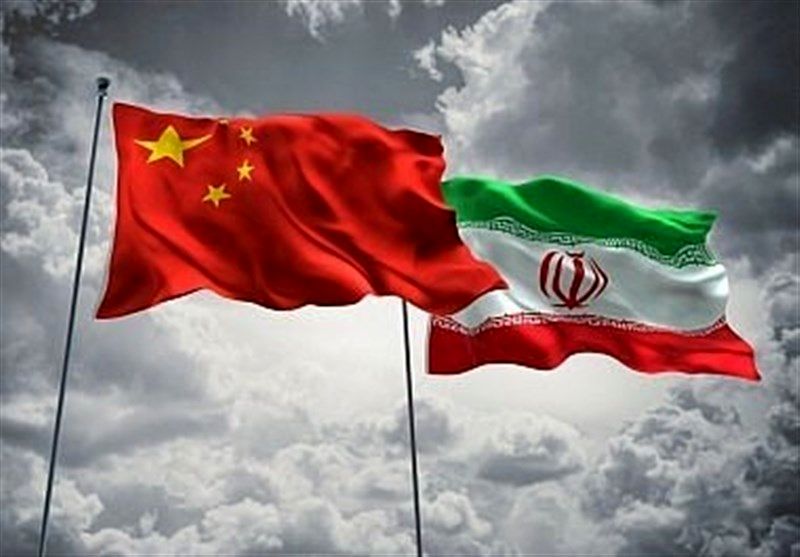Iran and China: Iran and China: Two Ancient Civilizations with New Opportunities for Cooperation
The relationship between Iran and China goes beyond a simple political or commercial interaction; it is rooted in a history spanning thousands of years, beginning with the Silk Road era and evolving to encompass new dimensions amid today’s geopolitical complexities and global economic transformations. In the modern era, the development of strategic relations, participation in infrastructure projects, cooperation in energy, cutting-edge technologies, and cultural exchanges have opened up new horizons for both countries.
Iran and China: Two Ancient Civilizations with New Opportunities for Cooperation
Introduction
The relationship between Iran and China goes beyond a simple political or commercial interaction; it is rooted in a history spanning thousands of years, beginning with the Silk Road era and evolving to encompass new dimensions amid today’s geopolitical complexities and global economic transformations. In the modern era, the development of strategic relations, participation in infrastructure projects, cooperation in energy, cutting-edge technologies, and cultural exchanges have opened up new horizons for both countries.
A Historical Background of Interaction
Iran and China, two cradles of civilization in Asia, have always been connected through the Silk Road throughout history. This ancient route, which linked East and West, served as a conduit for the exchange of goods, culture, ideas, and technologies between the two nations. During the Sassanid Empire and the Tang Dynasty, Iranian and Chinese merchants, envoys, and scholars maintained active ties, traces of which can still be seen in the cultural and artistic heritage of both countries.
Economic Relations in the 21st Century
In the past two decades, China has become one of Iran’s most important trading partners. Following the imposition of Western sanctions on Iran, China’s role as a reliable economic partner has become even more significant. In recent years, China has been the main importer of crude oil from Iran and has actively participated in oil, gas, petrochemical, transportation, telecommunications, and even urban infrastructure projects.
According to official statistics, the volume of trade between Iran and China in recent years has surpassed 20 billion dollars, and the 25-year comprehensive cooperation agreement between Iran and China outlines a long-term vision for the development of these ties.
Key Areas of Cooperation
1. Energy and Petrochemicals
China is one of the world’s largest energy consumers, and Iran, with its vast oil and gas reserves, can be a key supplier for the country. Chinese companies have so far been involved in projects such as the development of phases of South Pars and the West Karun oil fields. The export of bitumen, oil derivatives, and petrochemical products are among the areas with significant potential for expansion.
2. Advanced Technologies and Nano
Given Iran’s progress in the field of nanotechnology and scientific cooperation in high-tech and medical fields, there is potential for joint research and production projects. China is a major market for medical equipment, pharmaceuticals, and nanotechnologies, and Iran can use this opportunity to expand its exports.
3. Food Industry and Consumer Goods
With changing tastes among Chinese consumers and a growing demand for natural and traditional products, Iranian food industries — such as saffron, dates, pistachios, honey, dried fruits, and herbal teas — have significant potential for entry into the Chinese market. Adhering to quality standards and professional packaging is key to success in this area.
4. Handicrafts and Culture
Iranian art, through handicrafts such as carpets, enameling, marquetry, and pottery, can attract discerning Chinese audiences. The Chinese interest in Eastern art provides an opportunity for joint exhibitions, the export of cultural products, and even cooperation in teaching traditional arts.
5. Tourism and Cultural Exchange
With the growth of China’s tourism industry, Iran can be an attractive and historical destination for Chinese tourists. Likewise, the presence of Iranian tourists in China and participation in exhibitions and cultural events help deepen mutual understanding and strengthen people-to-people ties.
Opportunities and Challenges
Although the potential for cooperation is vast, there are also challenges along the way. Issues such as international sanctions, banking restrictions, differences in legal systems, cultural differences, and transportation problems are obstacles that require careful planning and close cooperation. Nevertheless, major opportunities such as joint investment, the use of yuan credit lines, and participation in China’s Belt and Road Initiative can pave the way for sustainable development of these collaborations.
Conclusion
China is not only an economic powerhouse but also a distinctive governance model in today’s world. One of China’s long-term goals is to become the world’s largest economy by 2030. Combining a dynamic economy, a centralized political system, and assertive diplomacy, China has become one of the most influential global actors. Despite challenges such as slowing economic growth and competition with the United States, the country’s role in the coming decades will be decisive.
The relationship between Iran and China is not merely economic; it is a strategic, historical, and multi-layered bond whose potential goes far beyond current cooperation. In today’s turbulent world, these two countries can, by relying on their civilizational heritage, geographical position, and economic capacities, present a successful model of South-South cooperation.
For companies like Oriental Gate, which stand at the crossroads of these interactions, deep knowledge of the Chinese market, monitoring opportunities, and the smart use of domestic capacities are the keys to entering this high-potential path successfully.

